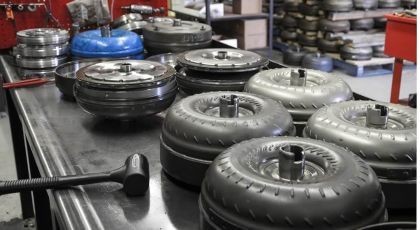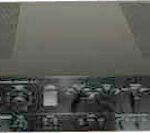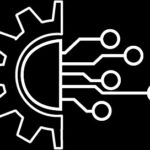 Torque Converter Inspection
Torque Converter Inspection
While often overlooked, the torque converter plays a crucial role in your automatic transmission vehicle. It’s the unsung hero responsible for transferring engine power to the transmission, enabling smooth gear shifts and overall vehicle operation. In fact, the global demand for torque converters highlights their importance in the automotive industry.
The global automotive torque converter market is experiencing consistent growth, projected at a CAGR of 4.54% up to 2021, driven by advancements in automatic transmission technology. However, like any mechanical component, torque converters can experience problems. When a torque converter is broken or begins to fail, it can significantly impact your car’s performance.
Recognizing the signs of a broken torque converter is essential for timely repair and preventing further damage. This article will explore common torque converter issues, their symptoms, and practical solutions to get your vehicle back on the road.
Understanding the Torque Converter and its Role in Transmissions
The torque converter is a fluid-filled coupling device situated between the engine and the automatic transmission. Its primary function is to act as a hydraulic pump, seamlessly transferring power from the engine to the transmission. Often, issues that seem like transmission problems can actually stem from a malfunctioning torque converter due to their interconnected nature and similar symptoms.
The Five Key Components of an Automatic Transmission Torque Converter
Within your car’s automatic transmission, the torque converter is composed of five vital parts:
-
Stator: Often referred to as the “middleman,” the stator’s role is to redirect transmission fluid, optimizing its flow back to the turbine impeller for increased efficiency.
-
Impeller Pump: Connected to the engine’s crankshaft, the impeller pump receives transmission fluid and is set in motion by the engine. As the engine speed increases, the impeller spins faster, generating greater hydraulic force and fluid flow.
-
Turbine: The turbine is connected to the transmission input shaft via a spline. This connection allows the turbine to transmit power to the internal transmission components, enabling gear shifting and ultimately, power delivery to the wheels.
-
Clutch (Lock-up Clutch): Modern torque converters frequently incorporate a friction clutch, known as a lock-up clutch. This clutch engages at higher speeds to minimize slippage and enhance fuel efficiency by creating a more direct mechanical connection.
-
Transmission Fluid: This specialized fluid is the lifeblood of the torque converter. It acts as the medium for hydraulic coupling, ensuring smooth starts and preventing engine stalling when the vehicle is stationary while in gear.
The modular design of the torque converter is advantageous. If problems are isolated to the torque converter itself, it can often be serviced or replaced independently, potentially saving you from a complete transmission overhaul.
Common Symptoms of a Broken Torque Converter
Several issues can indicate a Torque Converter Broken or malfunctioning. Recognizing these symptoms early can prevent more extensive damage.
-
Slipping: Experiencing a shudder or a feeling of hesitation when starting from a stop or during gear changes can be a sign of torque converter slippage. This sensation, often accompanied by unusual noises, occurs because the torque converter isn’t effectively transferring power between the engine and transmission. The shuddering and slipping, particularly noticeable in overdrive, indicate a disruption in the smooth power conversion process.
-
Shuddering: A persistent vibration, even at lower speeds, is another common symptom. This shuddering sensation feels like excessive vibration and can cause the car to feel sluggish or hesitant in its acceleration, a phenomenon described as lagging performance.
-
Overheating Transmission: Some vehicles are equipped with transmission temperature indicators. If this light illuminates frequently, or if you notice unusual transmission behavior like erratic shifting or getting stuck in a single gear (“fail-safe” mode), it could point to overheating. When coupled with other symptoms, overheating strongly suggests a potential torque converter issue. The underlying cause is often the torque converter’s inability to efficiently transfer power, leading to increased heat generation.
-
Contaminated Transmission Fluid: As a hydraulic coupling device, the torque converter relies heavily on clean transmission fluid. Contamination can severely compromise its function and damage internal components, as well as transmission parts.
-
Torque Converter Seal Damage: Damaged seals can result from wear and tear or other mechanical issues. Seal damage leads to transmission fluid leaks, reducing the fluid level necessary for proper torque converter operation and power transfer. This fluid loss can negatively impact both the torque converter and the transmission.
Troubleshooting and Repairing Torque Converter Problems
Addressing these common torque converter issues requires a systematic approach.
-
Addressing Slipping and Shuddering: The initial step for both slipping and shuddering symptoms is to check your transmission fluid level and condition. Low or incorrect fluid is a frequent culprit for these issues. Ensure the fluid is at the correct level and is the type recommended for your vehicle.
-
Resolving Overheating and Seal Damage: Overheating and seal damage are often interconnected. Fluid leaks from damaged seals lead to insufficient fluid levels, causing overheating, slipping, and shuddering. Repairing this involves identifying and replacing the damaged torque converter seal to restore proper fluid retention.
-
Dealing with Contaminated Transmission Fluid: Contaminated fluid containing debris like clutch material, metal shavings, or bushing fragments indicates more serious internal wear within the torque converter or transmission. This is a serious warning sign requiring professional diagnosis and repair. Flushing the fluid alone is usually insufficient; internal component inspection and potential replacement are likely necessary.
The Future of Torque Converter Technology
Ongoing advancements in automotive technology are shaping the future of torque converters. The demand for enhanced comfort, safety, and efficiency is driving innovation in torque converter design and manufacturing.
Future torque converters will likely feature more sophisticated control strategies, precisely tuned to the specific torque demands of each vehicle model and powertrain configuration. This customization, combined with insights into consumer preferences for vehicle type and transmission, will lead to smoother, more efficient, and comfortable driving experiences across the board.
If you suspect you have a broken torque converter, seeking expert advice is crucial. Consult a trusted mechanic to diagnose the issue accurately and recommend the appropriate repair solution to ensure your vehicle’s optimal performance and longevity.

